Parrot Anafi review – in pictures
Parrot’s best drone yet – but is it a DJI beater?
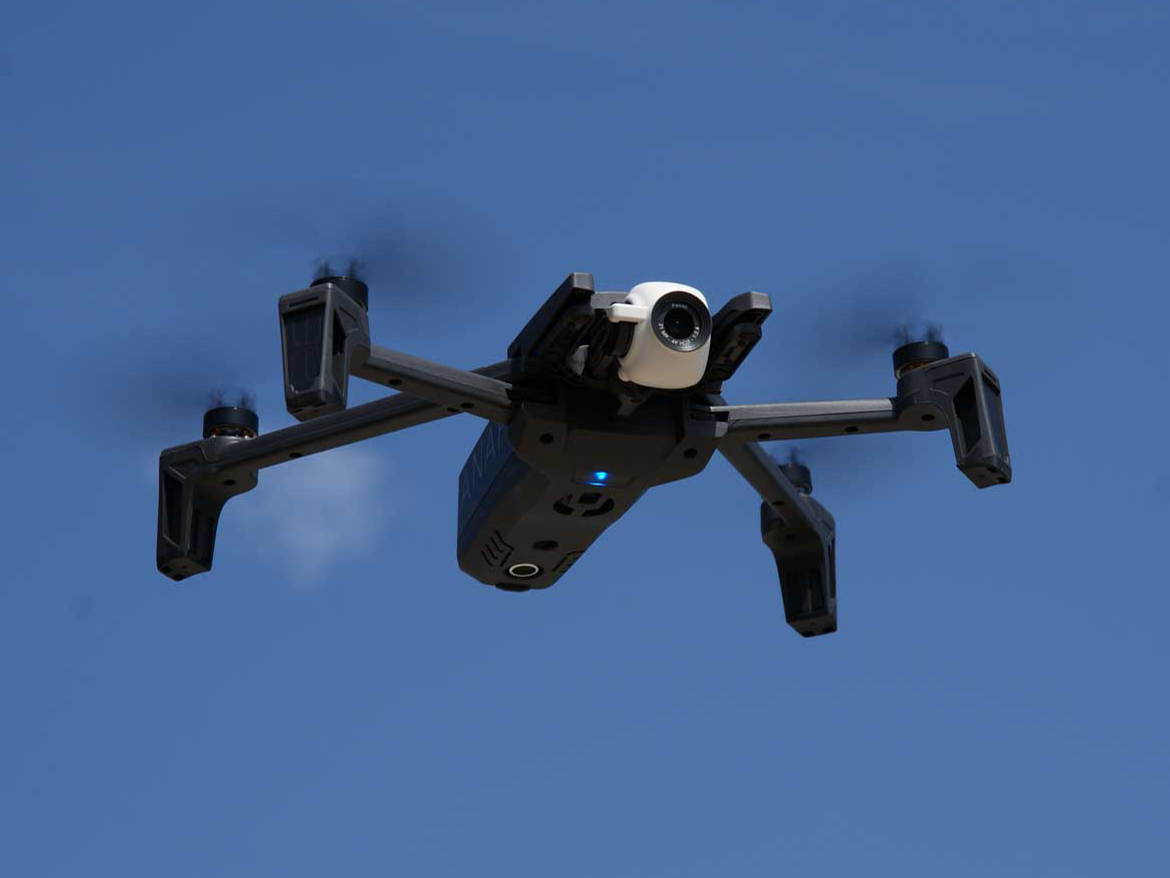
SMALL BUT STURDY
Parrot’s Paris-based design crew has clearly put a lot of work into making the Anafi as portable as possible. Weighing only 320g, it folds down to a narrow rectangular stick in seconds to be slipped into a well-padded protective case that’ll fit easily in any backpack, handbag or tote. We’d say it’s even easier to carry around than the Mavic Air, and despite its lightweight build, the Anafi is designed to resist winds of up to 31mph and, while we didn’t have a weather station on hand to check the actual strength of the summer breeze, we flew it on a blustery seaside day without any major issues.
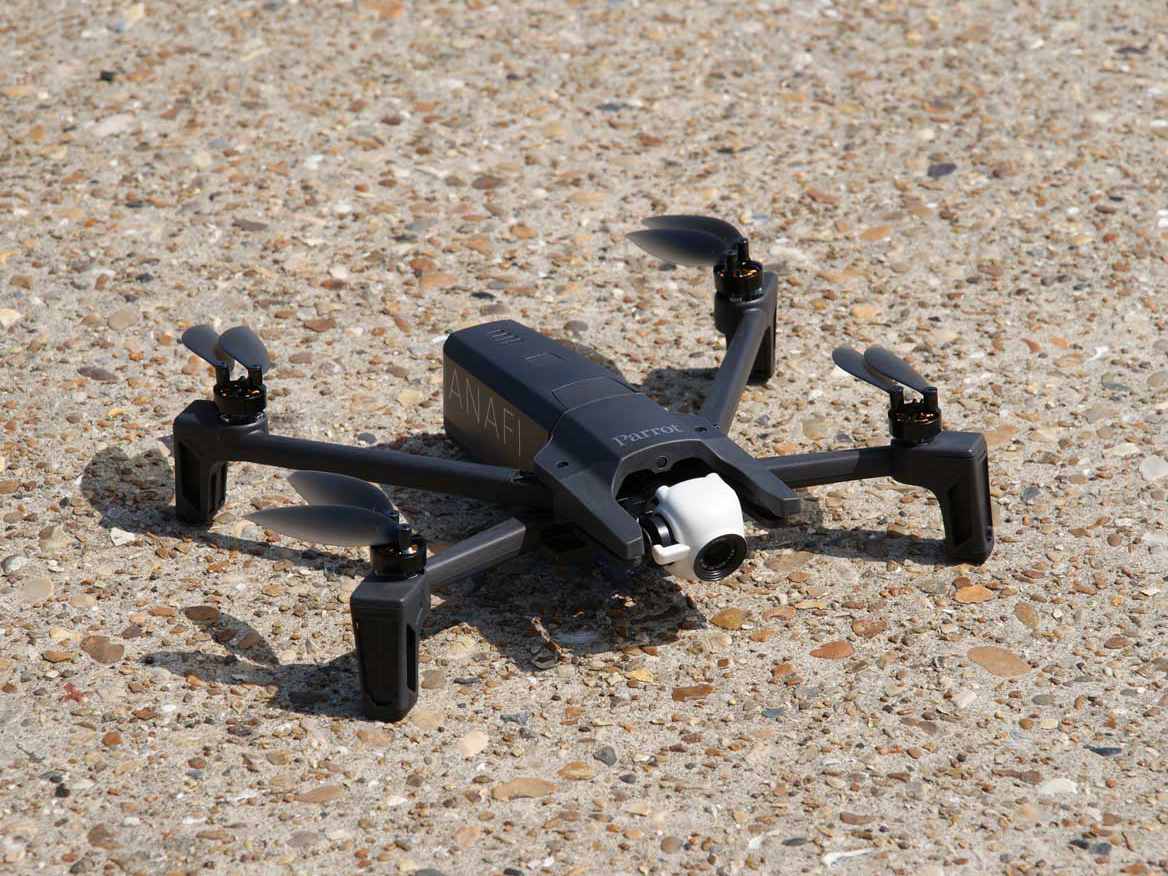
HAPPY FLYER
The aerodynamics of the drone mean it’s also fairly quiet in flight, even for a model its size. We still wouldn’t advocate taking it for a spin around the inside your local library, but it sounds less like an enraged swarm of killer bees than most 4K-equipped drones. One thing to note: the controller, despite folding up, doesn’t fit into the case, so you’ll need to leave a bit of extra room in your bag for it. It’s a tough cookie made out of hard plastic, though, so we wouldn’t be too worried about it getting dinged by your Thermos. Its phone-holder won’t accommodate any device with a screen bigger than 6in though – worth keeping in mind if you’re a phablet-fondler.
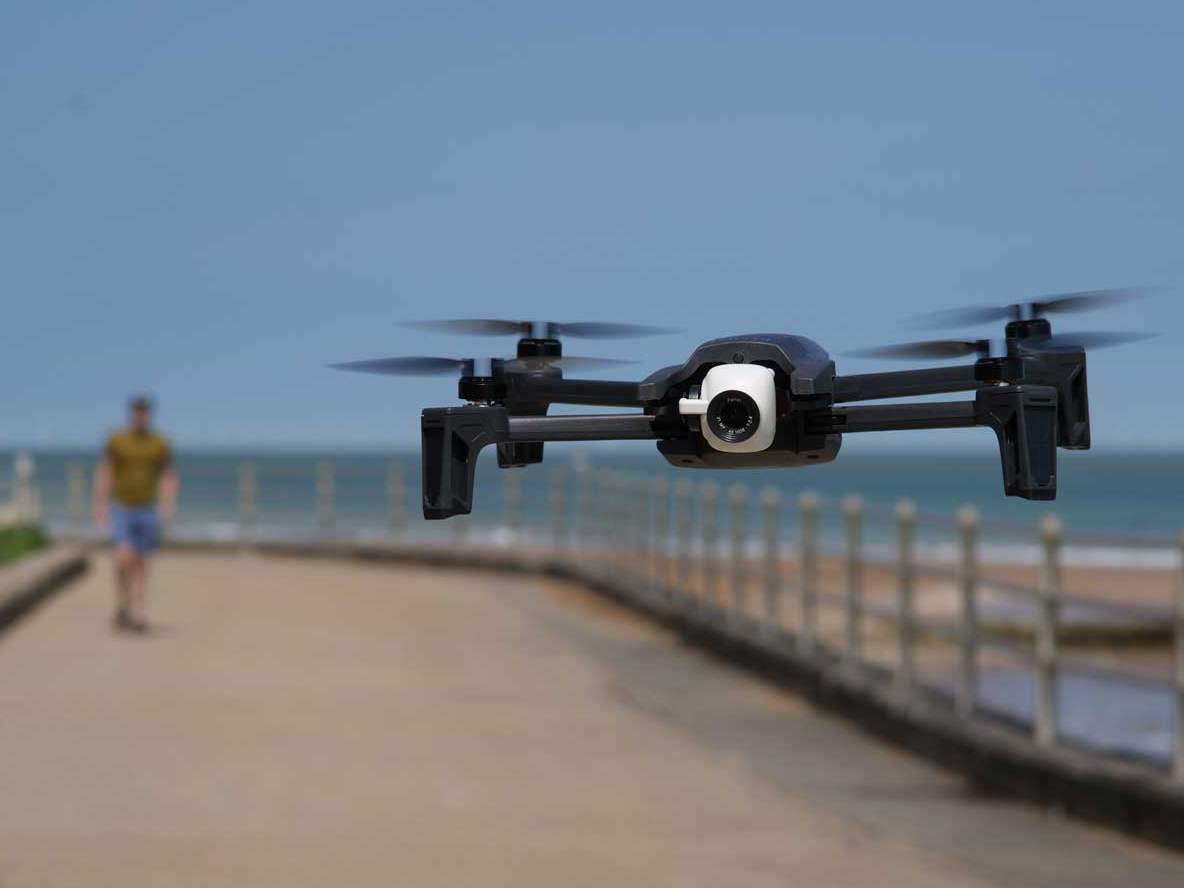
MAYDAY MAYDAY
The Anafi offers a couple of things you won’t find on rival drones, but lacks others you might expect. First, the bad news: there’s no camera-assisted collision detection or indoor stabilisation, so if you’re planning on filming your cousin’s wedding reception from inside the marquee, you’d best lay off the bubbly beforehand; you’ll need to control the drone’s movements fully manually, and it won’t prevent itself ploughing into Aunt Tabitha’s hat. Outdoors, things are much better: it uses GPS to hover steadily. The camera also totes a digital zoom which Parrot describes as “lossless” up to 2.8x magnification while filming Full HD video and 1.4x while filming 4K video. In practice, the claims hold water, with some algorithmic magic maintaining image quality while you zoom with one of the controller’s triggers.

TAKE TO THE SKIES
This is a fun, agile drone to fly, particularly in its nippier 33mph Sport mode, and it responds well to the simple controls. It’s not particularly fast when moving vertically up and down, so you’ll need to be patient when positioning it for a shot, but with an impressive 25 minutes of flight time per battery there’s no need to rush. Both the FreeFlight 6 companion app and the controller allow for automatic take-off and landing and a return-to-home mode, which we’d consider standard for any drone worth its salt. You’ll also get warnings when the Wi-Fi signal between the controller and drone gets weak, or when the battery is nearly spent; eventually the Anafi will force itself to return to its landing spot and touch down, even if you do nothing.
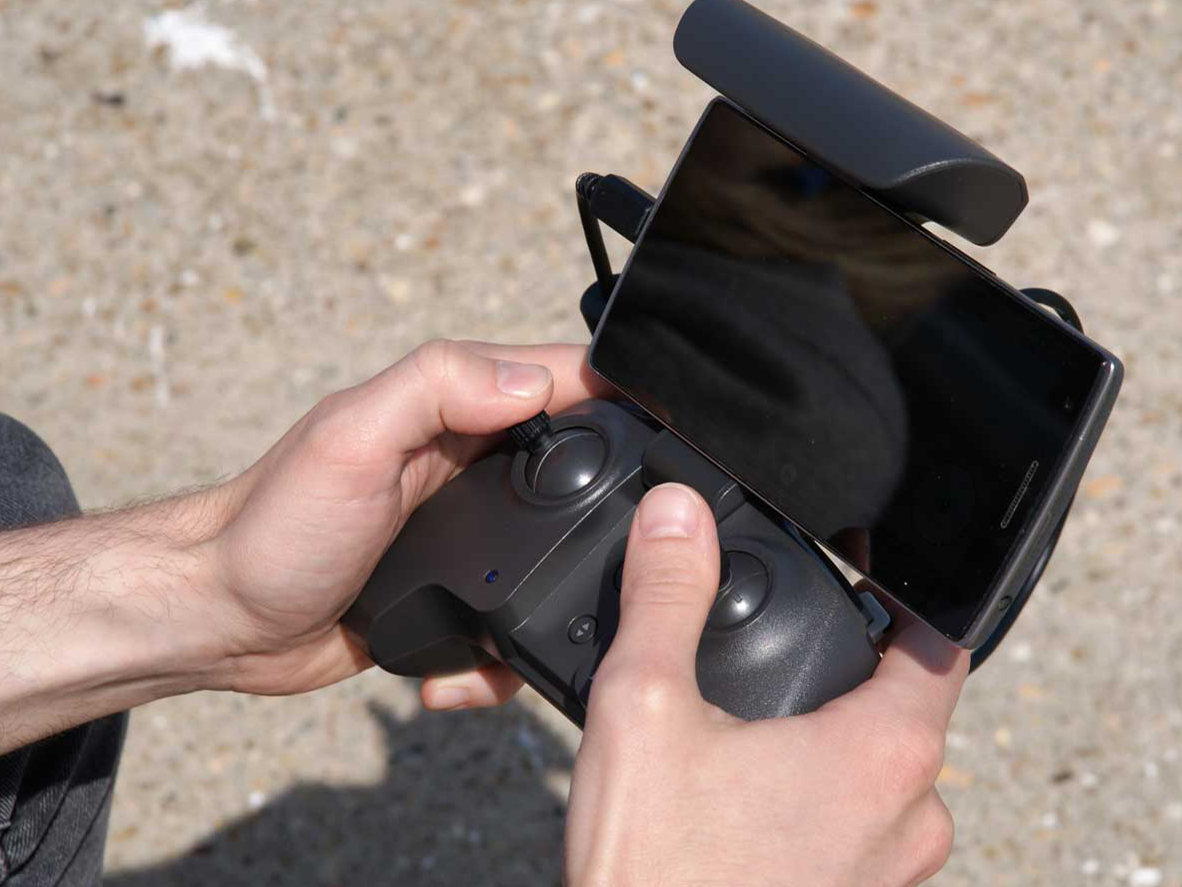
FUN FLYING, FANCY PHOTOGRAPHY
Parrot claims there’s a transmission range of up to 4000m in perfect conditions, but we found it to be a lot less than that, with warnings flashing up at 250m or thereabouts. Even so, the Anafi is comfortably the best flying camera Parrot has ever made, with its beautifully crisp 21MP stills and crystal clear 4K footage immediately banishing memories of the Bebop 2’s dreadful photographic showing. Speaking of which, videos and photos are stored on a microSD card which fits underneath the battery. A 16GB card comes in the box, but that will fill up quite quickly if you’re shooting in 4K. As well as regular video clips, you can shoot time-lapse and slo-mo videos too, while pixel-tweakers can shoot stills in RAW DNG for more control over how images turn out.
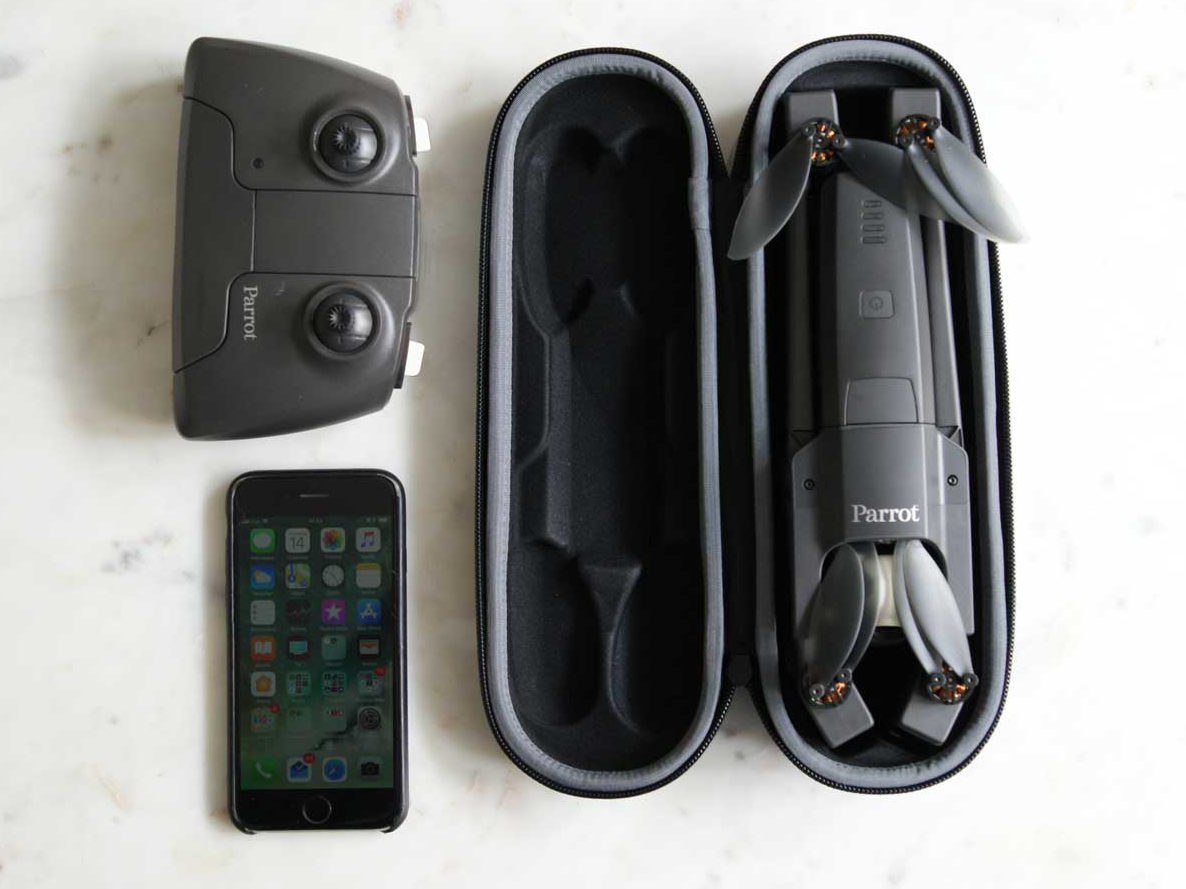
WHAT’S THE VERDICT?
The Anafi is far and away the best drone Parrot has made, with impressive all-round performance. The camera works brilliantly, the battery has decent stamina and the whole thing is helpfully portable and approachable. We still believe the DJI Mavic Air is a better all-round purchase, however, due to its collision detection, transmission range and indoor flying skills – but given its significantly cheaper, Parrot’s drone deserves to turn a few heads.


